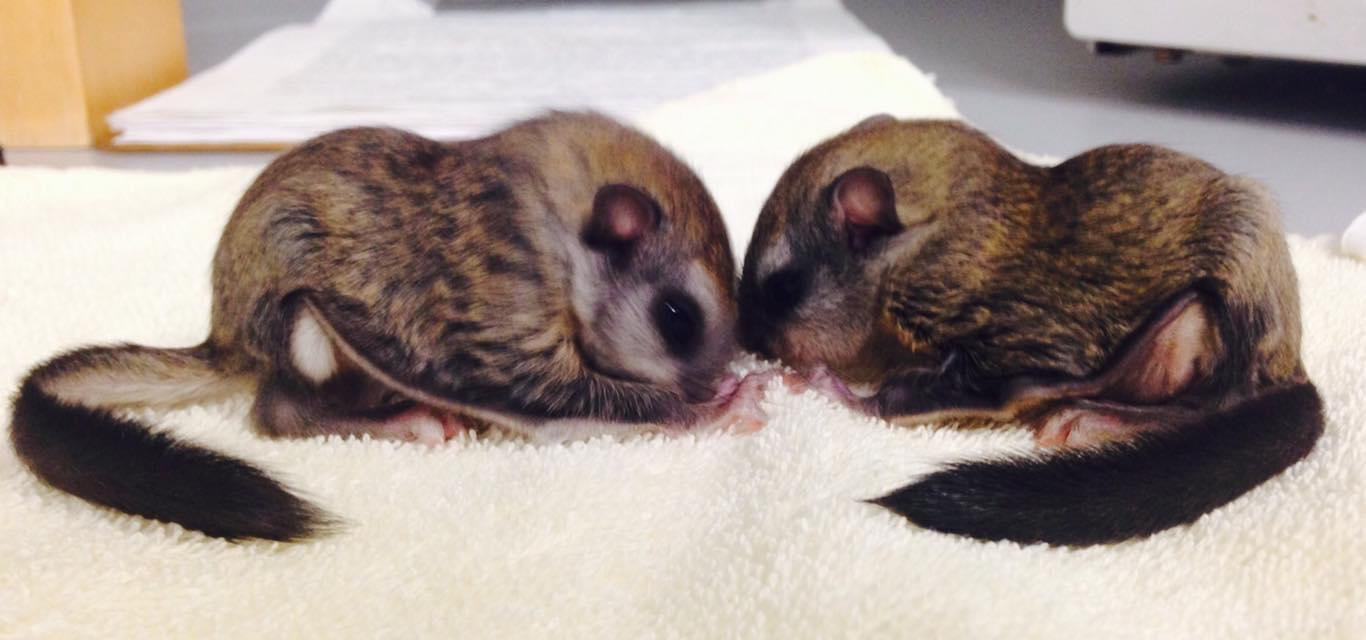June 2020 - The Northern Flying Squirrel
|
It’s a bird… It’s a plane… It’s SuperSquirrel!
Okay, even though it is named the Northern Flying Squirrel, it doesn’t fly; but it does glide. Humans have copied the gliding habits of squirrels. The special suits used by base jumpers and skydivers imitates the patagium of flying squirrels allowing a slow descent and maneuverability during flying. A new word for your wildlife vocabulary – patagium. This is a membranous structure stretching from the foreleg to the hind leg and supported by specialized bones in the wrist and allows these squirrels to glide from tree to tree. The glide can be initiated by a running start or by bringing their limbs under their body and propelling themselves off the tree. Once airborne, the membrane is stretched to a square shape and they glide downwards at a 30- to 40-degree angle. They are efficient gliders even able to make 90 degree turns around obstacles. The glides average between 5 and 50 feet. When ready to land, the tail is raised to change to an upward glide, the limbs are pointed forward to simulate a parachute. After landing, they run to avoid predators. Though they are agile and graceful flyers, they are clumsy on the ground. If threatened on the ground, they will hide rather than try to escape. Unless you are out at night and looking in just the right spot, you likely haven’t seen one of these squirrels. They are nocturnal and like most nocturnal mammals they have whiskers. Two active periods during the day are an hour after sunset for a couple of hours and then again, a couple of hours before sunrise. Their fur is light brown or cinnamon in color on their upper body. The fur changes to grayish on the flanks and white underneath. They have large eyes to see better at night and a flat tail. They are common through much of North America. The habitat is in conifer or mixed conifer forests. They form groups of 8 squirrels with a mix of adults and juveniles. During the winter, they sleep in same-sex groups to keep warm. They may have several dens, usually in cavities of conifers. Flying squirrels eat a varied diet including nuts, acorns, fungi and lichens. Sometimes dinner may also include fruits, sap, insects and buds. A typical litter contains 2-4 pups or kittens (either name is suitable). The babies are tiny weighing only 5-6 grams at birth and their toes are fused. By the sixth day, the toes separate and the eyes open at 31 days. Then just a few days later, at 40 days old, they leave the nest. They stay with mom until they are 3 months old. Tri County Wildlife Care, a local nonprofit started in 1994, is dedicated to the rescue and rehabilitation of our native wildlife and helping our community live in balance with wildlife. They envision a world where wildlife and people thrive together. For more information call (209) 283-3245, or visit pawspartners.org. |
Learn More!
|


